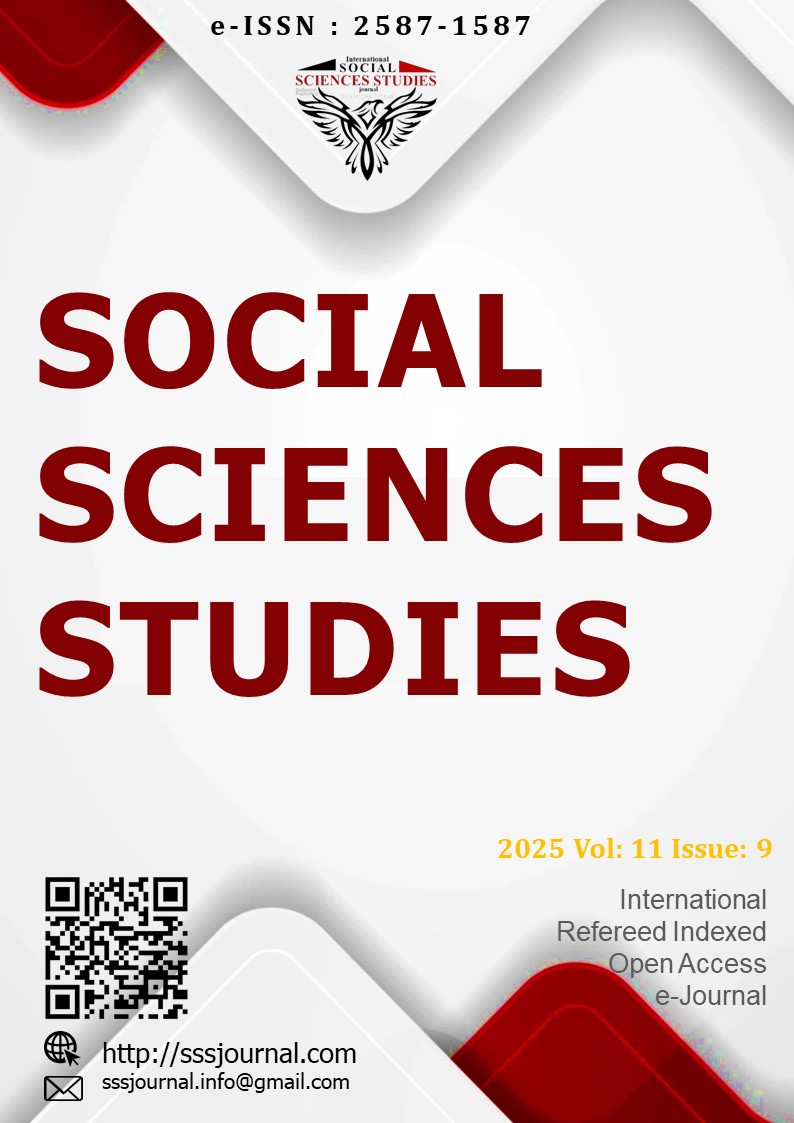Erkek Egemen Toplum Yapısının Gölgesinde Kaderi Yeniden Yazmak: Nathaniel Hawthorne’nun Kızıl Harf ve Cengiz Aytmatov’un Cemile’si
Author :
Abstract
|
Nathaniel Hawthorne’nun (1804-1864) “Kızıl Harf”i (The Scarlette Letter) ve Cengiz Aytmatov’un (1928-2008) “Cemile”si toplumsal yapının taşlarından biri olan kadını merkeze alan eserlerdir. Hawthorne’nun “Kızıl Harf”i 17. yüzyıl Püriten Amerika’sındaki kadını, Aytmatov’un “Cemile”si ise 20. yüzyıl Kırgızistan’ındaki kadını içinde bulundukları erkek egemen toplum yapısı bağlamında ele alırlar. Hem Cemile hem de Hester kendilerine yönelik ayrımcı ve önyargı barındıran yapıyla savaşları eserlerin konusunu oluşturur. Yapıyla savaşları aslında toplumsal kontrolden kaçma üzerinedir. Kontrol mekanizmasını işleten ise namus kavramıdır. Onların evli olmaları zaten pasif bir rolü içselleştirmelerini gerektirir. Ailenin namusuna söz getirecek herhangi bir eylem cezayı beraberinde getirir. Sosyal dışlanma ya da izolasyon ilk akla gelendir. Cemile çözümü yapıdan kaçarak bulurken, Hester yapının kendisine olan bakışını dönüştürmeyi başarır fakat her ikisi de yapıyı değiştiremez. Hester yapıyı içselleştirdiği için “A” harfi toplum nezdinde Adultery’den (zina yapan) Able/Ability (beceri/becerikli) haline dönüşür. Bu yönüyle en azından yapının sert tutumunda bir gevşeme sağlar. Çalışmanın protagonistleri Cemile ve Hester Prynne’nin yaşadıkları ataerkil toplum kadınlar üzerinde baskı, ayıplama ve neticesinde gerçekleşen ötekileştirme açılarından benzer özelliklere sahiptir. Her iki karakter de bu yapının içinde kimlik savaşı verir. Cemile yapıdan kaçarak, Hester ise yapıyı dönüştürmeye çalışarak ve yapıyı umursamayarak mücadele eder. Püriten toplum yapısı içinde kadınlar kaçmak gibi bir şansı olsa da kadınlar yapıyı içselleştirdikleri için bunu düşünmezler. Adeta görünmez bir duvarla püriten toplum sınırlarını çizer. Hester için tek çare yapının kuralları dâhilinde bir savaş vermek. Romanın sonunda Hester toplumun farklı kesimlerinden insanlar ve özellikle de kadınlar için bir kahramana ve bilge kadına dönüşür.
|
Keywords
Abstract
|
Nathaniel Hawthorne's (1804-1864) "The Scarlet Letter" and Chingiz Aytmatov's (1928-2008) "Jamila" are works that center on women as a cornerstone of social structure. Hawthorne's "The Scarlet Letter" examines women in 17th-century Puritan America, while Aytmatov's "Jamila" examines women in 20th-century Kyrgyzstan within the context of their male-dominated society. Both Jamila and Hester's struggles with the structure that discriminates and prejudices against them constitute the subject of their works. Their struggle with this structure is essentially about escaping social control. The concept of honor drives the control mechanism. Their marriage requires them to internalize an already passive role. Any action that threatens the family's honor brings punishment. Social exclusion or isolation is the first that comes to mind. While Cemile finds a solution by escaping the structure, Hester succeeds in transforming the structure's view of her, but neither can change it. Because Hester internalizes the structure, the letter "A" transforms from Adultery to Able/Ability In this respect, it at least provides a relaxation of the structure's rigid stance. |
The patriarchal society in which the protagonists of the work, Cemile and Hester Prynne, live shares similar characteristics in terms of oppression, stigma, and resulting marginalization of women. Both characters struggle for identity within this structure. Cemile struggles by escaping the structure, while Hester struggles by trying to transform it and disregarding it. Within the Puritan society, women have the opportunity to escape, but they don't consider it because they have internalized the structure. It draws the boundaries of Puritan society with an invisible wall. For Hester, the only solution is to fight within the rules of the structure. By the end of the novel, Hester becomes a hero and a wise woman for people from different segments of society, especially women





